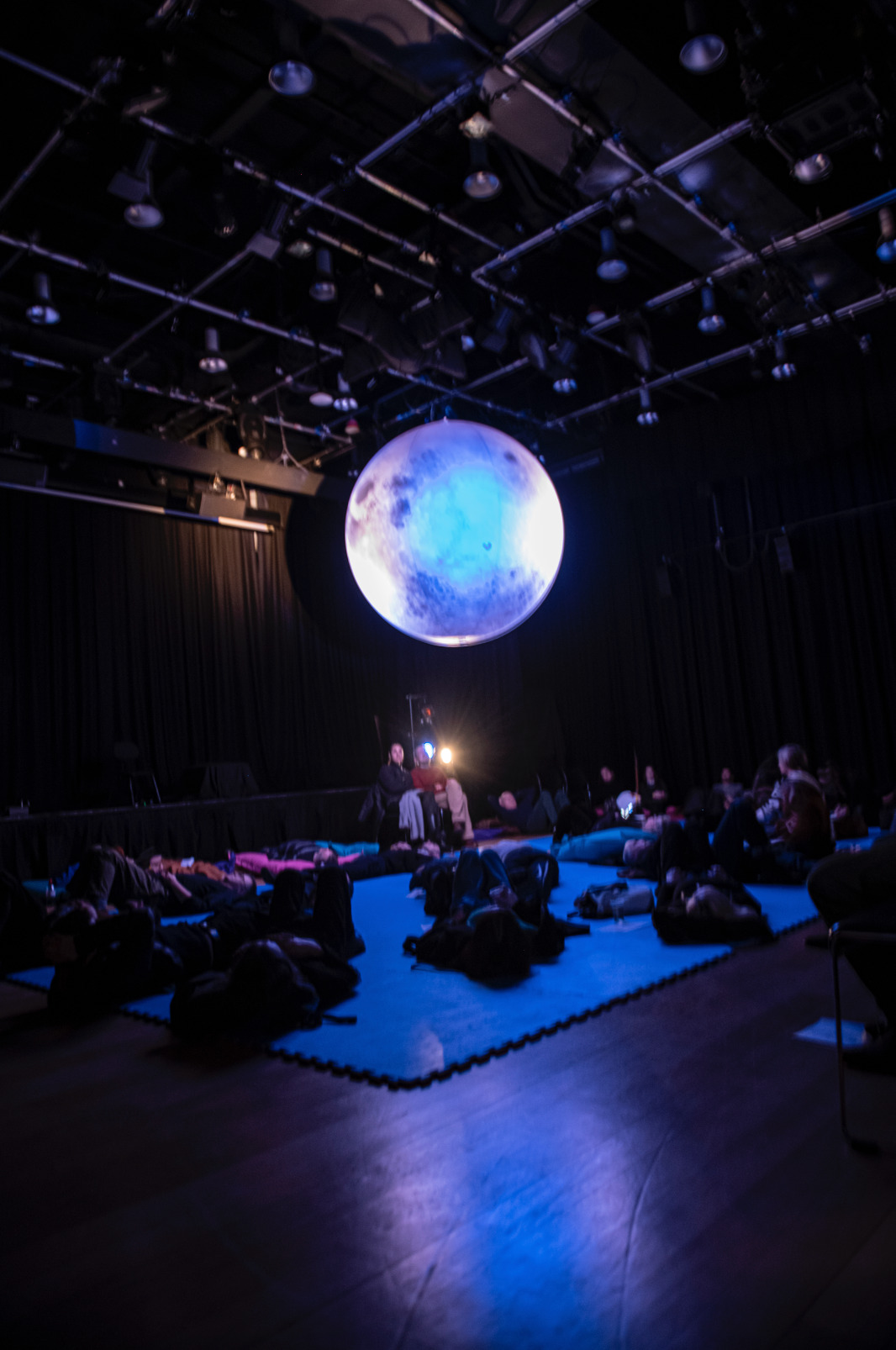An audience of approximately 50 people lie down on mats and bean bags, with a huge moon replica hanging above them – its lunar cycles, shadows and physical characteristics are replicated by the lighting around the room. All the while, a soundtrack is provided by electronic composers including Rival Consoles, Oliver Coates and Tim Exile, utilising immersive sound technology provided by d&b audiotechnik’s d&b Soundscape. In other words, just your average night out in North London.
This all takes place at King’s Place, the cultural hub located next to The Guardian newspaper’s headquarters in the sprawling transport metropolis that is King’s Cross, the gateway to the rest of the country and mainland Europe. The attendees, however, aren’t headed to Paris tonight, but rather the Moon.
With the Regent’s Canal to its left, King’s Place is the area’s premier multi-arts venue, self-referring as ‘the cultural pulse of King’s Cross.’ Its vibrant music programme welcomes many genres and genre-crossing artists, and such composers as Alexandra Streliski and Lambert have performed on its stages.
Tonight’s Moonbathing event, however, is a performance of light and sound, a deeply immersive experience – hence why the audience are encouraged to lie down and gaze up at the Moon, as it were.
There are three Moonbathing sessions on this frightfully cold January evening; the second session’s audience shuffles out, seeming noticeably nourished and refreshed by their experience. The third and final audience show their tickets and head into Hall Two, which on this occasion is almost pitch black.




